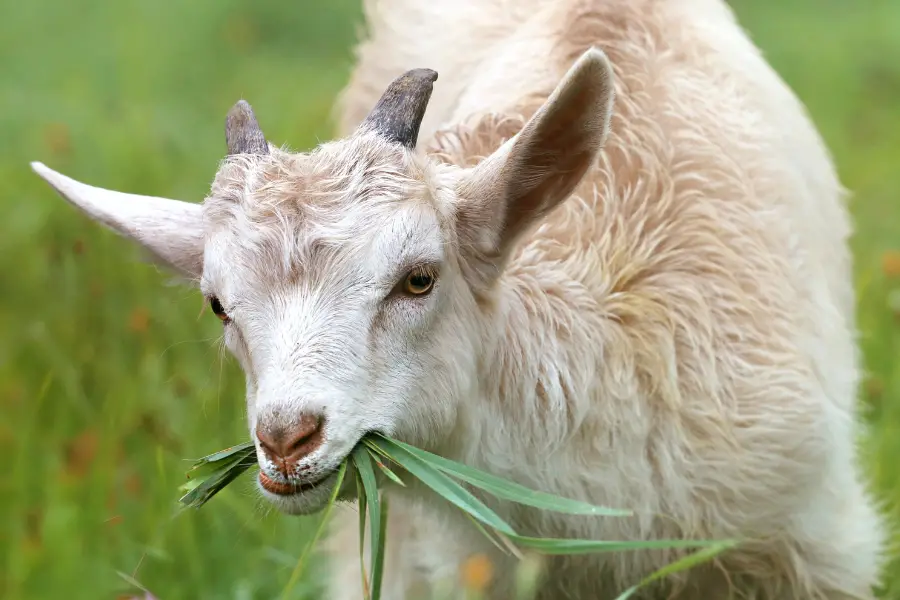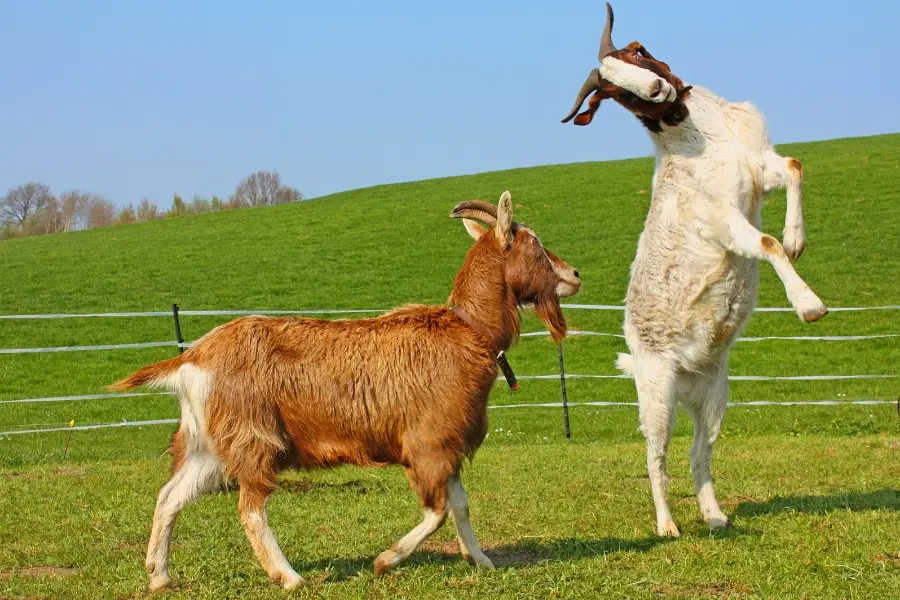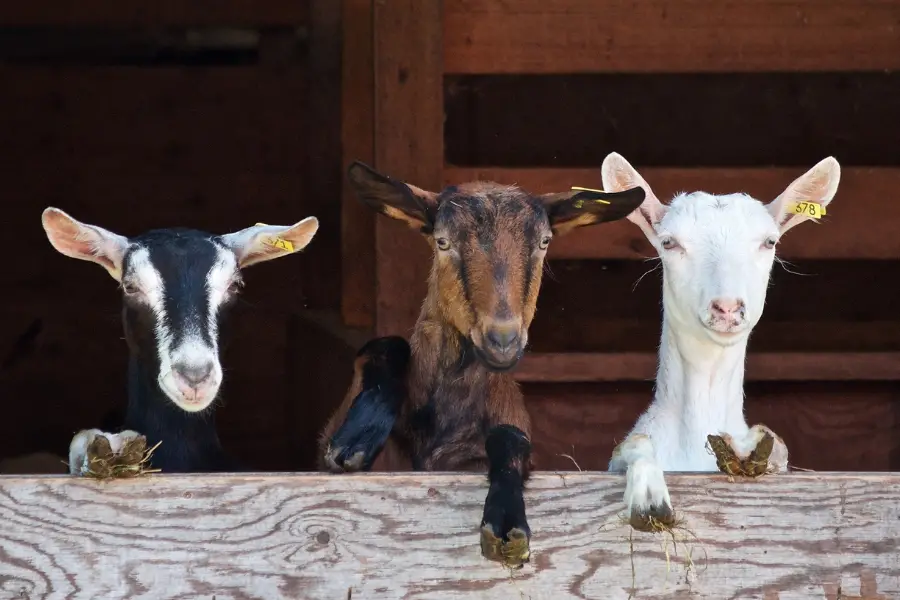
What is a Cashmere Goat?
Cashmere goats are not a breed but a type of goat that produces cashmere fiber.
Most goat breeds apart from the Angora goats that provide varied quantities of fiber may be called cashmere goats. For goats to be called Cashmere goats, they gave to meet the North American Cashmere Goat Standard (NACG) defined by the Cashmere Goat Association.
In the late 1980s was when the first Cashmere goats were imported to the United States from New Zealand and Australia.
Cashmere Goat Characteristics
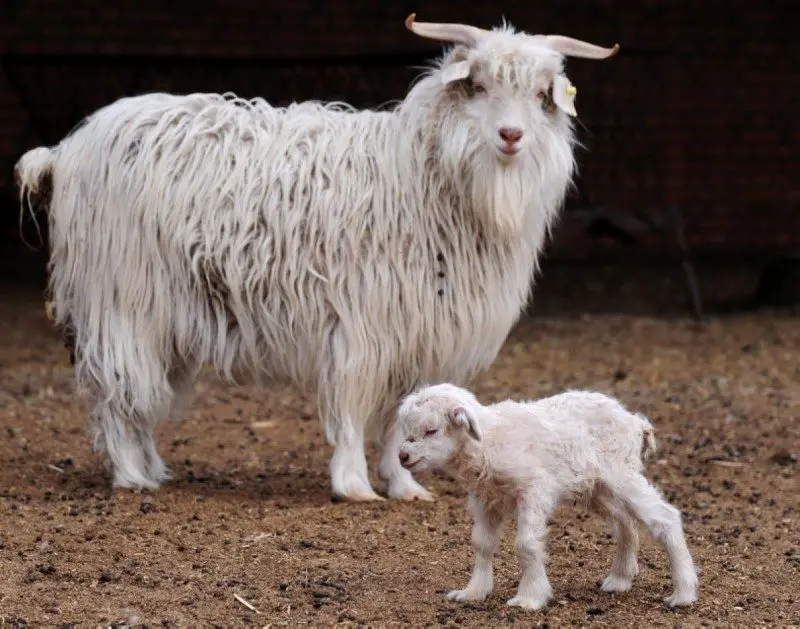
- The first characteristic of Cashmere goats is the fiber. That’s right. Cashmere, the fine soft fiber we associate with expensive sweaters and jackets comes from Cashmere goats. Cashmere undercoat fiber is soft and very fine and the guard hairs on the outside are longer and coarse. A goat’s coat that cannot meet these factors; length, degree of crimping and diameter should not be considered as cashmere fiber.
- There are no height and weight requirements since Cashmere goat is not a breed of goats. Some producers use Spanish goats and Pygmies as cashmere fiber sources. This justifies that the size and weight of the cashmere goats may be diverse.
- Cashmere goats are hardy animals. Their coats keep them warm in cold areas. Cashmere goats that have been crossbred with Spanish goats adapt well in the United States.
- Again since cashmere is not a breed but a type of goat, their temperament may vary with the species. Pygmies used in cashmere fiber production are friendly and more domesticated than the Spanish goats that are difficult to handle.
- Cashmere goats give birth to 1 to 3 kids and are excellent mothers. Their gestation period is 5 months.
- Most cashmere goats can be bred when they are 9 months old and weighing approximately 80lbs.
- These goats can be bred for dual purposes. You can breed cashmere goats with Spanish goats. This will increase your profits on production of both meat and fiber. You can also breed Saanen goats with Cashmere goats, hence increasing profits on both milk and fiber production.
Cashmere Goat Breeds – What Breeds of Goat Produce Cashmere?
Any goats except Angora goats produce cashmere fiber.
For a breed to be recognized as a Cashmere goat, it has to meet specific NACG standards and also goats that have been bred to produce significantly high amounts of cashmere fiber. The goats’ undercoat and guard hairs may be on any color. The guard hair must be coarse. Cashmere fiber is soft, crimped and lacking luster.
Below are some goats that have been bred and identified as cashmere goats:
ASMARI GOAT
Asmari goats produce 500 to 700 grams of fiber in a year.
|
Country of Origin |
Afghanistan |
|
Breed Weight – Bucks |
50 to 90kg |
|
Breed Weight – Does |
45 to 60kg |
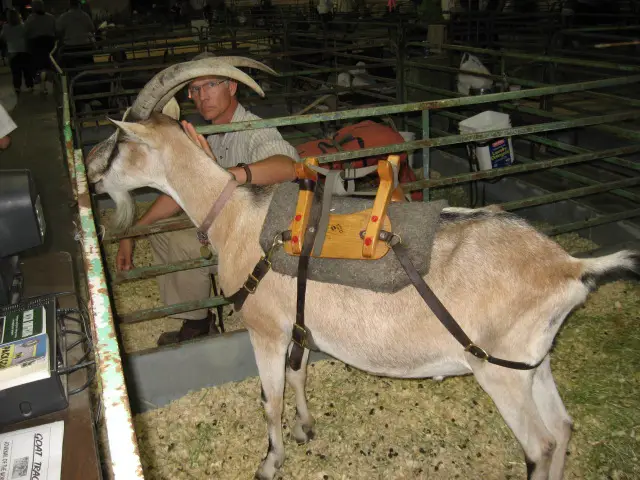
AUSTRALIAN CASHMERE
The fiber is white in color.
|
Country of Origin |
Australia |
|
Breed Weight – Bucks |
90 to 120 pounds after shearing |
|
Breed Weight – Does |
55 to 90 pounds after shearing |
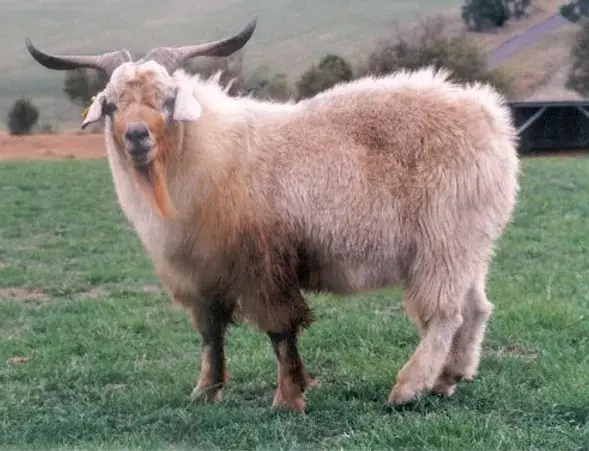
CHANGTHANGI GOAT
A breed of goat from Hubei province in China that is used in the production of Cashmere fiber
|
Country of Origin |
India |
|
Breed Weight – Bucks |
Approximately 25 kg |
|
Breed Weight – Does |
Approximately 20kg |
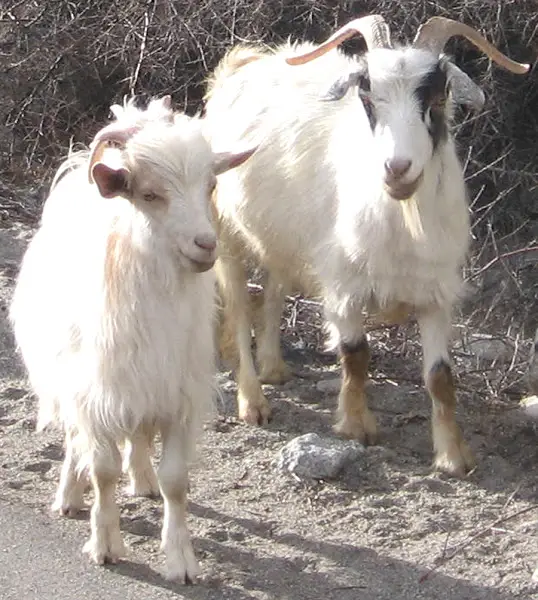
CHENGDE GOAT
A breed of goat from Hubei province in China that is used in the production of Cashmere fiber
CHIGU GOAT
The fiber color is white mixed with grayish red. They produce the same amount of cashmere as Changthangi goats
|
Country of Origin |
India |
|
Breed Weight – Bucks |
Males weigh approximately 40 kg |
|
Breed Weight – Does |
Female body weight is approximately 25 kg |
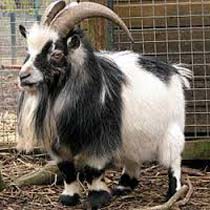
DUTCH LANDRACE GOAT
The undercoat of these goat breed is brown in color and has been bred with other cashmere goats to improve the production of cashmere fiber.
|
Country of Origin |
Netherlands |
|
Breed Weight – Bucks |
Males average 75kg |
| Breed Weight – Does |
Female goats average 60kg |

HEXI-CASHMERE GOAT
These goats produce white cashmere. An adult Hexi goat may produce 184 grams of down at 15.7 micrometres diameter.
|
Country of Origin |
China |
|
Breed Weight – Bucks |
90 to 120 pounds after shearing |
|
Breed Weight – Does |
55 to 90 pounds after shearing |
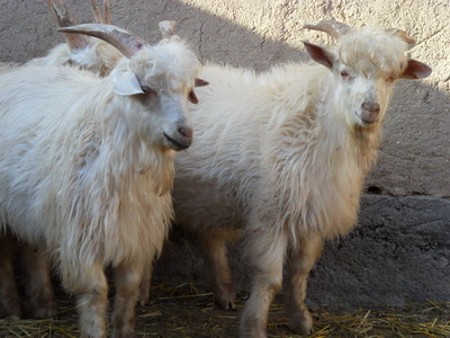
JINING GREY GOAT
This is a goat breed found in Shandong province in China and is used in the production of cashmere fiber.
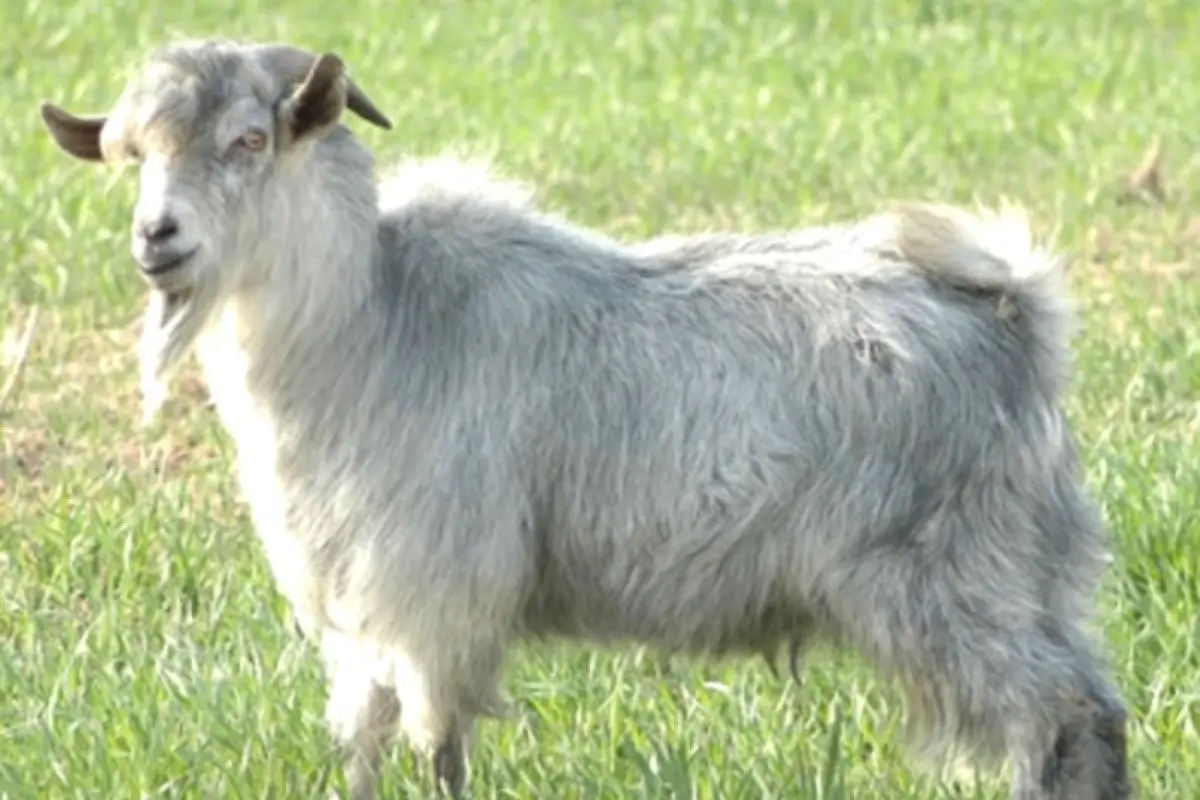
ZALAWADI GOAT
This is a goat from Gujarat in India and is used in the production of Cashmere fiber.
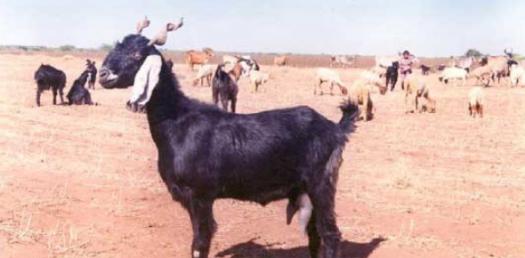
ZHIWULIN BLACK GOAT
This is a goat from Gujarat in India and is used in the production of Cashmere fiber.
| Country of Origin | China |
| Breed Weight – Bucks | 90 to 120 pounds after shearing |
|
Breed Weight – Does |
55 to 90 pounds after shearing |
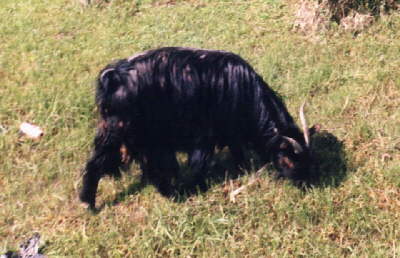
ZHONGWEI GOAT
The cashmere fiber is white and occasionally black in color.
| Country of Origin |
China |
|
Breed Weight – Bucks |
Males weigh 39 kg on average |
|
Breed Weight – Does |
Females weigh 25 kg on average |
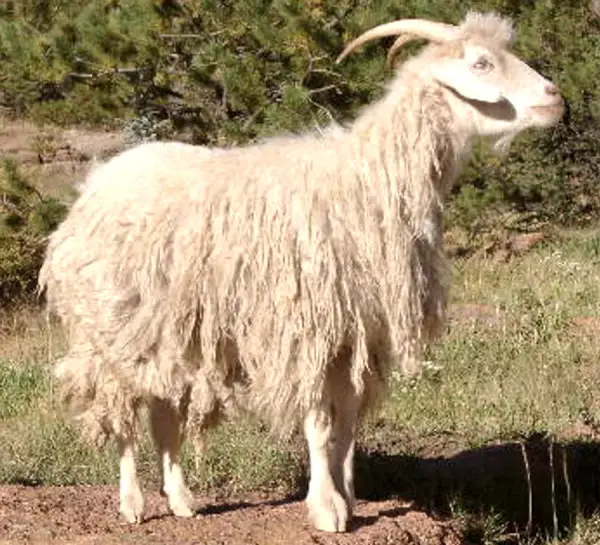
Cashmere Goat Origin – Where Do Cashmere Goats Come From?
The cashmere goats originated from the Himalayan region of Kashmir in India thus getting the name Cashmere. China is the largest producer of cashmere contributing to about 60% of production while 40 % of production is produced by Australia, New Zealand, India, Turkey and Afghanistan.
The cashmere industry in the United States has been on the decline since producers are switching to other goat breeds in order to survive.
Best Cashmere Goat Breed
As discussed earlier, cashmere is a type of a goat and not a breed. Different countries use different goat breeds to produce Cashmere fiber.
- In China, producers use Hexi Cashmere, Zhongwei and Zhiwulin as main cashmere fiber producers
- In Australia and New Zealand, producers use the Australian Cashmere goat for purposes of cashmere production.
- In the United States, producers mostly use Nigora and Pygora goats. These goats produce three types of fiber. Type A which is Angora Mohair, Type B which is Cashgora fiber and Type C is Cashmere fiber.
So the main type of breed used in production of Cashmere will depend on the country of origin. There is no unique breed that can be distinguished from the rest as the best fiber producing goat.
Cashmere Goat Price – How Much Does a Cashmere Goat Cost in the USA?
The price range for cashmere goats is between USD175-USD550. Prices will range based on:
- The type of fiber goat you are looking for- this may include cross breeds of cashmere goats. Spanish goats producing cashmere may be expensive than pygmies due to size
- Sex of the goat
- Age of the goat: Younger kids are likely to be cheaper than adults.
- Production capabilities: The price of Cashmere ranges between 120 and 190 USD per pound. A high producing goat is likely to cost more than a low producing goat.
How Much Cashmere per Goat?
The amount of fleece on fiber goats depend on factors like the size of the goat, the length of the fiber, fitness and amount of fiber coverage in the goat’s body. Cashmere goats are capable of producing about 4 ounces of cashmere annually.
Cashmere vs Angora Goats – What’s the Difference?

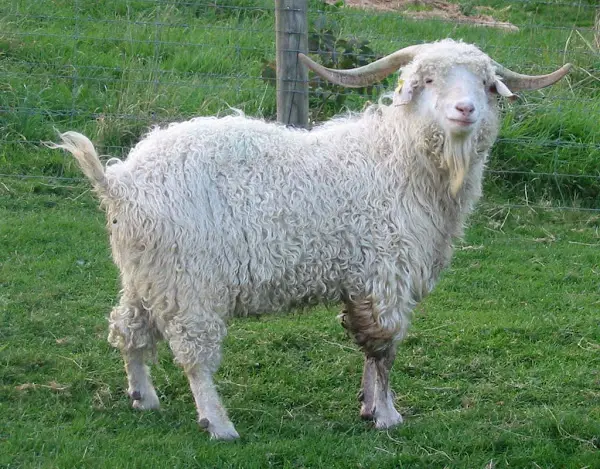
Below we are going to discuss the differences between Cashmere goats and Angora goats.
- Cashmere goats produce cashmere fiber while Angora goats produce Mohair. The differences between the two fibers is shown below
| CASHMERE FIBER | MOHAIR |
|---|---|
|
It is soft, strong and a durable material. |
Mohair is very soft and fluffy. |
|
The price of cashmere can range from USD120 to 140 depending on the availability. |
Mohair can sell at USD 10 per pound when raw. |
|
Cashmere fiber is lightweight. |
It is also more elastic and durable than wool. |
|
Garments made from cashmere are warmer and more breathable compared to garments made of mohair. |
It is used in knitting, weaving, making hats, gloves, sweaters and it is also used in spinning. |
|
Capable of producing about 4 ounces of cashmere annually |
Capable of producing more than 10 pounds of fleece during its two shearings. |
- Cashmere goats grow bigger than Angora goats and can even be kept with other livestock such as cattle.
- Angora goats reach maturity at two years old while Cashmere goats can reach maturity at 9 months old.
Cashmere Goat Milk – Can You Milk a Cashmere Goat?
Though cashmere goats are best kept for fiber production, one can milk cashmere goats.
Though not all breeds will offer plenty of milk, producers have crossbred the Saanen goat with other cashmere goats in order to produce both cashmere and milk. Saanen are high producers of milk, so if crossbred with other fiber goats, farmers will get profits in both ends.
Raising Cashmere Goats for Profit – Tips for Farmers

Cashmere goat farming is a way to increase the potential of your land. The fiber market in the USA has been in short supply of cashmere so anyone who wants to enter into this venture is likely to reap profits. Below are some guidelines on how to raise the Cashmere goats for profit.
- Identify the Cashmere goat that meets your need. As discussed before, there are heavy cashmere producers and goats that produce little fiber. So you have to decide on the goat that meets your specific needs. If you are going commercial, then it’s best if you buy heavy cashmere producers.
- Shelter and fencing. Once you bring your herd home, you will want to protect them from predators. A good strong fence will always keep predators away and it stops your herd from trespassing into other peoples properties. A good clean and dry shelter will protect your goats from harsh weather conditions.
- Feed. Proper feeding and nutrition ensures high reproductive efficiency and good quality fiber. Pasture provides all nutrients that the goats need. If you have no pasture, then you can feed the goats a high quality protein diet containing grain, minerals and hay.
- General care. Cashmere goats are considered more delicate because fiber production takes a lot from the animal. General care includes:
- Shearing. You need to get a proper shearing kit because many fiber goats are sheared twice in a year.
- Lice prevention. Lice affect the quality of the hair so it is important to regularly control and also worming the goats.
- Vaccination. Contact your Vet in order to guide you through the vaccination program of cashmere goats.
Where to Buy Cashmere Goats in the USA?
- Registries and goat clubs: Breeders promotes goats so you will find a healthy goat breed from the registries. You are able to view the herd’s history and performance.
- Breeders’ websites: go directly to a goat breeder’s website and search for the Cashmere goat you are interested in.
- Newspapers. Producers often advertise goats that are on sale on newspapers. So you might check with your local daily and see the goats that are on sale.
- Goat farms. You may as well visit a goat ranch in your area and check whether the farmers might be selling any goats. You will also be able to learn a lot when buying a goat from a farm.
References:


